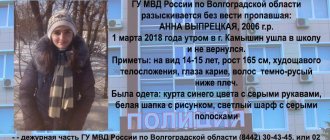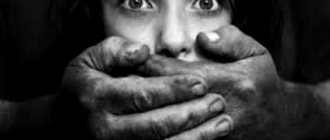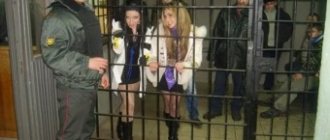There are several articles for causing bodily harm; they can be administrative or criminal, depending on the circumstances of the fight. The consequences of assault can be different - someone beat a passerby half to death, someone bruised his wife, someone pushed a friend in the heat of a quarrel, and he fell, hitting himself painfully. Hair pulling, arm twisting - all this can also be classified as bodily harm.
The punishment must correspond to the act, so for a bruise on the cheekbone there will be one article, for broken kidneys - another. And even when there are no traces left on the body, the article on beatings can still come into play - if after the fight the victim went to the doctor, and he recorded that the person felt pain or dizziness.
Too many cases of beatings do not reach the police, especially when it comes to domestic violence. But fights are fights in Africa, and the offender must be punished. As you know, since 2021, minor injuries caused by family members have been decriminalized, but subsequently numerous amendments were adopted to the law. So you cannot think that by periodically beating your loved ones, you can avoid criminal prosecution. Such matters cannot be left to chance. Going to court is the surest way to get justice. Especially if you enlist the support of an experienced lawyer.
Do you want to figure it out, but don’t have time to read the article? Lawyers will help
Entrust the task to professionals. Lawyers will complete the order at the cost you specify
23 lawyers on RTIGER.com can help with this issue
Solve the issue >
Fight on the street: responsibility and consequences
Liability for battery varies widely, depending on both the severity of the injuries and the circumstances. A fight already implies the intentional nature of the damage. Accordingly, depending on the severity of the damage inflicted, the criminal code distinguishes:
- Light damage (Article 116 UKRF). The maximum criminal sanction for this crime is 2 years in prison.
- Medium damage (Article 112 UKRF). The maximum possible sanction is up to 5 years in prison.
- Serious damage (Article 111 UKRF). The maximum penalty is up to 15 years in prison.
Important:
In the first two cases, a pre-trial reconciliation procedure is available. Those. Depending on the situation, it is possible to resolve the conflict without criminal proceedings.
Register now and get a free consultation from Specialists
What is said in Article 116 of the Criminal Code of the Russian Federation and its comments
The law provides punishment for actions that in everyday life are called a fight . Let us remind you that by a fight or beating, the legislator means beatings and other violent actions.
The article in question is about inflicting physical pain on a person, motivated by hooligan motives. The following motives are equated to them :
- political;
- ideological;
- national or racial hatred;
- religious hostility;
- aggressive attitude towards a certain social group, etc.
The legislation clearly delineates the degree of consequences caused to the victim, drawing a comparison with Article 115 of the Criminal Code of the Russian Federation “Intentional infliction of minor harm to health.”
In the comments to the article, the concepts of “beatings” and “violent actions” are revealed in more detail , the composition of the offense, its objective and subjective aspects, objects and subjects are described, the boundary is drawn between other atrocities similar in their composition, and the qualifying features are explained.
Reference. Article 116 has a sub-article for violators who were previously sentenced for the same act, but who suffered administrative punishment (Article 116.1 of the Criminal Code of the Russian Federation “Battery by a person subject to administrative punishment”).
Punishment for fighting in a public place
As stated above, liability varies greatly depending on the circumstances of the incident. And you can receive criminal punishment for a fight only if the other party did not cause damage to the offender. If it is proven that there was a confrontation, the liability will be much lighter. Which one we will discuss below
The culprit in the fight: who is considered the attacker and who bears the main responsibility
There is no concept of “fight” in the law, just as there is no concept of “harm caused during a fight.” There is an attacker and a victim. The identification of the parties, in turn, determines the further outcome of the conflict.
If both participants in the fight write statements to the police, considering themselves to be the injured party (after all, in a fight, both participants can get injured), they will take into account the evidence of the one who defended himself. The harm that the defender caused to the attacker will not be punished, because The attacker acts intentionally, and the defender acts without intent.
Important:
if the attacker was harmed during the fight, which seriously affected his health, then in the future, the presence of illness will be a mitigating circumstance in court, but will not affect the perception of the parties in any way.
What to do if children get into a fight on school grounds
If students get into a fight during recess, the administrator on duty or the teacher should notice it. The first thing to do is to separate the students without allowing more children to join the fight. If a teacher learns about a fight from students, he must put aside all his work and immediately come to the scene to separate the fighters. You need to act carefully so as not to harm the students and not get hit yourself.
If a fight happened on a school porch or in the foyer of an educational institution, then a security guard should break up the fight. He does not have the right to detain strangers, but can call the police if the situation gets out of control.
First of all, the school administration, as well as parents, must be notified about the incident. If necessary, an ambulance is called to the scene and the juvenile affairs commission is notified. If the parties to the conflict were not harmed, then it is enough to contact a school psychologist. In case of serious consequences, it is necessary to call the police.
To prevent serious conflicts between students, a favorable atmosphere must be created at school. The teacher must control the situation in the classroom, promptly preventing emerging conflicts.
Punishment for fighting on the street: from a fine to a maximum security prison
Depending on the circumstances, the following types of punishments should be distinguished:
- Fine up to 40 thousand rubles. or compulsory work;
- Fine up to 100 thousand rubles or restriction of freedom for 3 years;
- Imprisonment for up to 5 years;
- Imprisonment for up to 15 years.
Below we will discuss each situation in detail.
Register now and get a free consultation from Specialists
Liability for a fight in a public place that does not result in loss of health of the victim
A fine of up to 40 thousand rubles can be received for a fight if its consequences do not lead to health problems. Previously, in this case, Article 116 of the Criminal Code was used. After the introduction of Law No. 323 on July 15, 2016, criminal punishment for minor bodily injuries occurs only in situations where the victim is a relative. In other cases, administrative liability arises.
Thus, if a fight occurred on the street with a passer-by (who is obviously not a relative), and he was not injured resulting in harm to health, then the culprit faces administrative punishment for the fight. (Only if the incident occurred for the first time)
Important:
Criminal punishment cannot be avoided if it is proven that the beatings were inflicted out of hooliganism or on the basis of interethnic/religious hostility.
Repeated battery is already a criminal article (Article 116.1 of the Criminal Code). In this case, the culprit faces up to six months of correctional labor or a fine of 40 thousand rubles.
What is the penalty for battery in the family?
The introduction of changes in the summer of 2016 to the article of the Criminal Code requires a separate interpretation. The sanction of the article has been significantly tightened. Domestic violence will result in the following types of liability for the attacker:
- Restriction (and, under certain circumstances, imprisonment) of freedom for up to two years (or correctional labor for the same period)
- Mandatory work for up to 360 hours. (Previously it was up to 240 hours)
The severity of the punishment is determined by the circumstances. For example, a son beats up his elderly parents. If the examination establishes that they are helpless, this will significantly tighten the punishment. The punishment for fighting while drunk will also be harsher. And if a crime is committed against children, liability arises under a more severe article - 156 of the Criminal Code (child abuse).
Punishment for fighting with moderate injuries
The law defines bodily injury of moderate severity as damage to health that resulted in impairment for a period of 21 days or more. The Criminal Code provides for up to 3 years in prison for this
.
Important: The law provides for fines and correctional labor as an alternative to imprisonment. However, in practice such measures are the exception rather than the rule. In the vast majority of cases, moderate injuries result in real prison sentences.
Group fights are not uncommon. Bodily injuries of moderate severity inflicted during such a fight can be qualified under Article 112 of the Criminal Code as a group beating. For this you can get up to 5 years in prison. The use of a weapon or an attack committed out of hooligan motives are also considered aggravating circumstances.
It is important to note that under this article it is possible to avoid criminal prosecution. There is a reconciliation procedure for this. According to the law, you can ask for reconciliation if :
- The attacker compensated the victim for the harm;
- The attacker had no previous convictions.
Important
: Initiating a case of moderate bodily harm does not require a statement from the victim. Data is transmitted to the police from a medical institution if doctors have reason to believe that the cause of the injuries is a deliberate attack.
Register now and get a free consultation from Specialists
Liability for grievous injuries in a fight
Serious bodily harm is considered to be damage that would lead to the death of the victim in the absence of medical care
.
Therefore, stab wounds almost always belong to this type of harm. In addition, this includes damage after which the functioning of any organ was disrupted.
If such actions did not have aggravating circumstances, the culprit will receive up to 8 years in prison.
If the injured party in the fight is a child, adolescent, or helpless person, the maximum sentence is 12 years
As stated at the beginning of this section, grievous bodily harm is one that could potentially kill a person. The statistics are that without medical care, people die from serious bodily injury in about half the cases. If this happens, and the court proves a direct connection between the actions of the perpetrator and the death of the victim, the maximum penalty will be 15 years in prison.
What to do if a fight happened outside of school
It is better if the teacher learns about what happened from the students, and not from the police. And this does not at all indicate that the teacher needs to create his own network of informants. With confidential communication, students themselves will tell the teacher about their problems. At the same time, it is important to discuss the details of any conflict with children, reminding them that committing criminal acts entails punishment under the Criminal Code of the Russian Federation.
If the teacher became aware of the fight from the students themselves, then he must report the incident to the principal and parents. If necessary, the KDN and the police are involved in the case. If the message came from the police, then the law enforcement officers will most likely notify the director and parents themselves.
The development of a culture of communication will help prevent conflicts outside of school. Having become accustomed to a friendly atmosphere at school, children will not enter into conflicts in the outside world. At the same time, they should be taught safety skills by carefully choosing friends for a walk. Children need to be explained that they should not agree to risky offers, and that it is better to avoid companies where alcohol is consumed.
A powerful adrenaline wave hits
This is how the human body works: no matter how calm and collected you are, when you are suddenly scared or angry, adrenaline is always released into your body. And if it helped our ancestors to run away from a bear for a long time or beat a neighbor in a cave with a club, now the adrenaline rush has a lot of negative consequences.
The fight or conflict has passed in ten seconds, and you are being beaten for another twenty to thirty minutes. The feeling is somewhat reminiscent of excessive intoxication and passes just as slowly and unpleasantly.
Qualification of the offense
To qualify an act under the article of the Criminal Code of the Russian Federation for a fight on the street, it must contain hooligan motives and other motives (racial, political, religious, etc.). Violent battery will be punished more severely than simple battery. If the specified motives are not found in the crime, then the punishment will be carried out within the framework of the administrative code.
If the accused has a criminal record for a similar violation , but only under the administrative code, his second offense will already be qualified under Article 116.1 of the Criminal Code.
The content of Article 116 of the Criminal Code of the Russian Federation should be distinguished from torture under Art. 117 of the Criminal Code “Torture” . They are characterized as systematic beatings, i.e. violent acts repeated at different times. Beatings, in turn, involve only a single fight with several blows (at least three).
If, after the beating, damage to health occurs (mild, moderate or severe), then the act must be qualified by the court under other articles of the code: 111 “Intentional infliction of grievous harm to health,” 112 “Intentional infliction of moderate harm to health,” etc.







